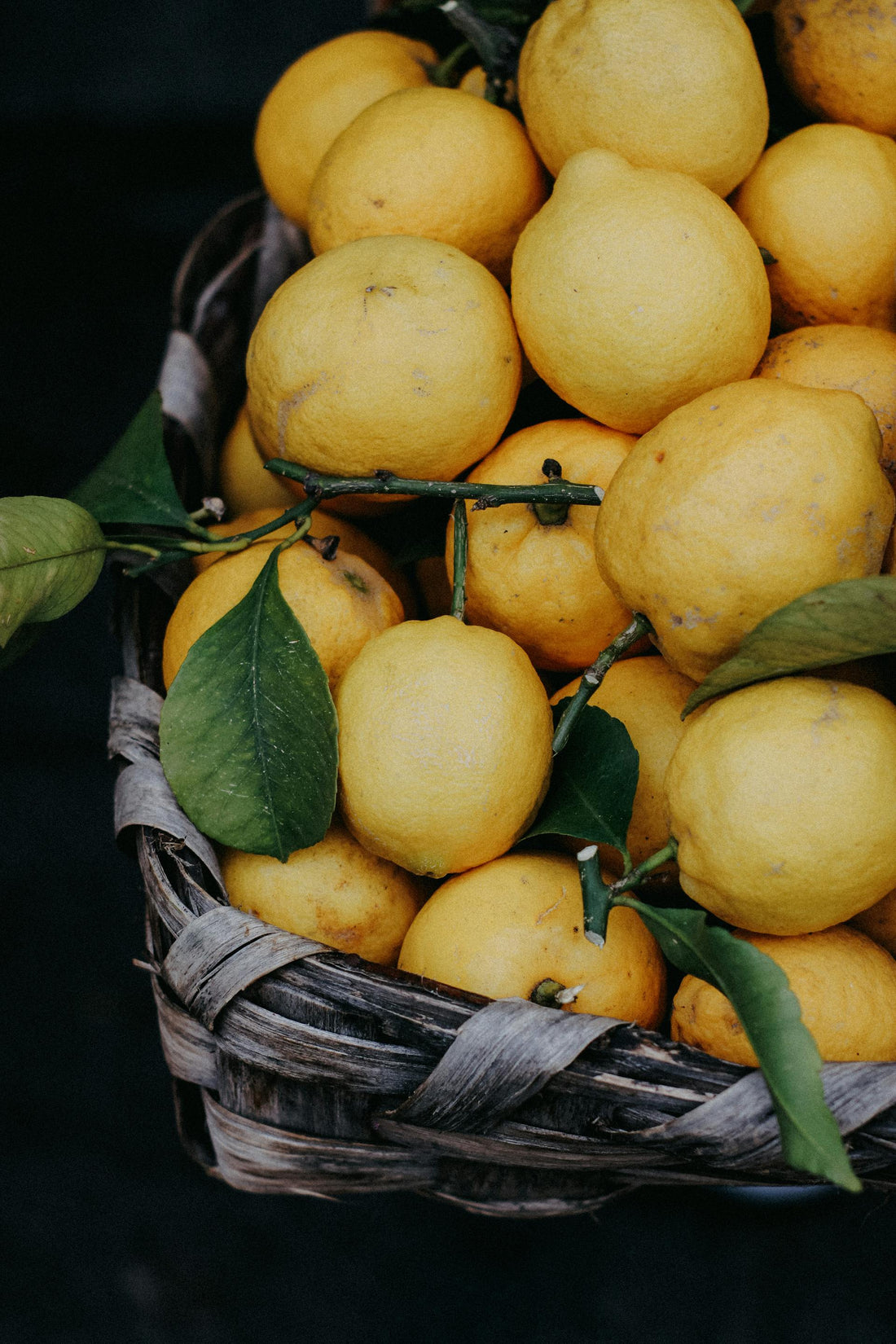
Fragrance Ingredients: A Seasonal Calendar
Share
Spring
1. Bergamot (Citrus bergamia)
- Origin: Italy (Calabria)
- Harvest Season: Winter to early spring
- Notes: Fresh, citrusy, slightly floral
- Interesting Fact: Often called the “prince of citrus,” bergamot oil is a key ingredient in Earl Grey tea.
2. Lily of the Valley (Convallaria majalis)
- Origin: Europe and Asia
- Harvest Season: Late spring
- Notes: Sweet, green, floral
- Interesting Fact: In French tradition, it is given as a gift on May 1st for good luck.
3. Cherry Blossom (Prunus serrulata)
- Origin: Japan
- Harvest Season: Spring
- Notes: Soft, delicate, floral
- Interesting Fact: Known as Sakura in Japan, it symbolizes the transient nature of life.
4. Neroli (Citrus aurantium)
- Origin: Tunisia, Morocco
- Harvest Season: Spring
- Notes: Bright, citrusy, floral
- Interesting Fact: Named after the Italian princess of Nerola, who used it to scent her gloves.
5. Hyacinth (Hyacinthus orientalis)
- Origin: Eastern Mediterranean
- Harvest Season: Spring
- Notes: Rich, green, floral
- Interesting Fact: The name comes from Greek mythology, where the flower sprang from the blood of Hyacinthus.
Summer
6. Lavender (Lavandula angustifolia)
- Origin: France (Provence)
- Harvest Season: Mid to late summer
- Notes: Herbal, floral, slightly woody
- Interesting Fact: Lavender fields in Provence are a major tourist attraction in July and August.
7. Jasmine (Jasminum grandiflorum)
- Origin: India, Egypt
- Harvest Season: Summer
- Notes: Sweet, heady, floral
- Interesting Fact: Known as the “king of flowers” in perfumery due to its strong and sweet scent.
8. Tuberose (Polianthes tuberosa)
- Origin: Mexico
- Harvest Season: Summer
- Notes: Rich, creamy, floral
- Interesting Fact: Often used in night-blooming floral compositions due to its intense aroma.
9. Ylang-Ylang (Cananga odorata)
- Origin: Madagascar, Comoros
- Harvest Season: Summer
- Notes: Sweet, fruity, floral
- Interesting Fact: The name means “flower of flowers,” and it’s a key component in Chanel No. 5.
10. Basil (Ocimum basilicum)
- Origin: Italy, France
- Harvest Season: Summer
- Notes: Fresh, green, slightly spicy
- Interesting Fact: Widely used in both culinary and perfumery for its invigorating scent.
Autumn
11. Cardamom (Elettaria cardamomum)
- Origin: India, Guatemala
- Harvest Season: Autumn
- Notes: Warm, spicy, sweet
- Interesting Fact: Often referred to as the “Queen of Spices,” it’s one of the most expensive spices by weight.
12. Patchouli (Pogostemon cablin)
- Origin: Indonesia, Philippines
- Harvest Season: Autumn
- Notes: Earthy, woody, sweet
- Interesting Fact: Patchouli leaves are often used in Asian traditional medicine.
13. Rose (Rosa damascena)
- Origin: Bulgaria (Valley of Roses), Turkey
- Harvest Season: Late spring to early autumn
- Notes: Rich, floral, slightly spicy
- Interesting Fact: The rose petals are harvested by hand early in the morning to preserve their scent.
14. Cedarwood (Cedrus atlantica)
- Origin: Morocco, USA
- Harvest Season: Autumn
- Notes: Woody, dry, slightly sweet
- Interesting Fact: Cedarwood has been used since ancient times for its aromatic and preserving properties.
15. Saffron (Crocus sativus)
- Origin: Iran, Spain
- Harvest Season: Autumn
- Notes: Warm, spicy, slightly metallic
- Interesting Fact: Saffron is the world’s most expensive spice, derived from the delicate stigma of the flower.
Winter
16. Frankincense (Boswellia carteri)
- Origin: Somalia, Oman
- Harvest Season: Winter
- Notes: Resinous, spicy, slightly citrus
- Interesting Fact: Frankincense has been used in religious and cultural ceremonies for thousands of years.
17. Myrrh (Commiphora myrrha)
- Origin: Ethiopia, Somalia
- Harvest Season: Winter
- Notes: Warm, spicy, slightly bitter
- Interesting Fact: Myrrh was one of the gifts brought by the Magi to the newborn Jesus, symbolizing suffering and sacrifice.
18. Cinnamon (Cinnamomum verum)
- Origin: Sri Lanka
- Harvest Season: Winter
- Notes: Warm, spicy, sweet
- Interesting Fact: Known as the “gold of spices,” cinnamon has been highly prized since ancient times.
19. Clove (Syzygium aromaticum)
- Origin: Indonesia
- Harvest Season: Winter
- Notes: Spicy, warm, slightly sweet
- Interesting Fact: Cloves are the dried flower buds of the clove tree and have been used in perfumery and cooking for centuries.
20. Vanilla (Vanilla planifolia)
- Origin: Madagascar, Mexico
- Harvest Season: Winter
- Notes: Sweet, creamy, warm
- Interesting Fact: Vanilla beans are the fruit of a specific type of orchid, and the cultivation process is highly labor-intensive.
21. Mimosa (Acacia dealbata)
-
- Origin: France (Grasse), Australia
- Harvest Season: Late winter to early spring
- Notes: Powdery, sweet, floral
- Interesting Fact: Mimosa flowers are symbolic of sensitivity and secret love in the language of flowers.
22. Orange Blossom (Citrus aurantium)
- Origin: Spain, Tunisia
- Harvest Season: Spring
- Notes: Fresh, sweet, floral
- Interesting Fact: Orange blossom is a symbol of purity and is often used in bridal bouquets.
23. Peony (Paeonia lactiflora)
- Origin: China, Japan
- Harvest Season: Spring
- Notes: Fresh, rosy, green
- Interesting Fact: Peonies have been cultivated in China for over 2,000 years and are a symbol of prosperity.
24. Geranium (Pelargonium graveolens)
- Origin: Egypt, China
- Harvest Season: Spring to early summer
- Notes: Green, rosy, slightly minty
- Interesting Fact: Geranium oil is often used as a substitute for rose oil due to its similar scent profile.
Summer
25. Gardenia (Gardenia jasminoides)
- Origin: China, South Africa
- Harvest Season: Summer
- Notes: Creamy, white floral, lush
- Interesting Fact: Gardenia flowers are known for their intense fragrance and are often used in leis in Hawaii.
26. Lemon (Citrus limon)
- Origin: Italy (Sicily), Spain
- Harvest Season: Summer
- Notes: Fresh, zesty, citrus
- Interesting Fact: Lemon oil is extracted from the peel and is one of the most popular essential oils for its refreshing scent.
27. Honeysuckle (Lonicera caprifolium)
- Origin: Europe, Asia
- Harvest Season: Late spring to summer
- Notes: Sweet, floral, honeyed
- Interesting Fact: Honeysuckle is often associated with happiness and positive energy in folklore.
28. Magnolia (Magnolia grandiflora)
- Origin: USA (Southern states), China
- Harvest Season: Summer
- Notes: Fresh, citrusy, floral
- Interesting Fact: Magnolia flowers have been used in traditional Chinese medicine for centuries.
29. Blackcurrant (Ribes nigrum)
- Origin: Europe, Russia
- Harvest Season: Summer
- Notes: Fruity, tart, green
- Interesting Fact: Blackcurrant buds are used in perfumery for their distinctive, tangy scent.
30. Mint (Mentha spicata)
- Origin: Europe, USA
- Harvest Season: Summer
- Notes: Fresh, cool, herbal
- Interesting Fact: Mint has been used since ancient times for its refreshing scent and medicinal properties.
Autumn
31. Sage (Salvia officinalis)
- Origin: Mediterranean region
- Harvest Season: Autumn
- Notes: Herbal, camphorous, slightly spicy
- Interesting Fact: Sage has been considered a sacred herb with cleansing properties in various cultures.
32. Sandalwood (Santalum album)
- Origin: India, Australia
- Harvest Season: Autumn
- Notes: Woody, creamy, warm
- Interesting Fact: Sandalwood is often used in meditation practices due to its calming scent.
33. Pine (Pinus sylvestris)
- Origin: Northern Europe, North America
- Harvest Season: Autumn
- Notes: Fresh, woody, resinous
- Interesting Fact: Pine oil is known for its invigorating and purifying properties.
34. Oakmoss (Evernia prunastri)
- Origin: Europe
- Harvest Season: Autumn
- Notes: Earthy, woody, slightly sweet
- Interesting Fact: Oakmoss is commonly used in chypre and fougère fragrance families.
35. Coriander (Coriandrum sativum)
- Origin: Mediterranean, India
- Harvest Season: Autumn
- Notes: Spicy, woody, slightly citrus
- Interesting Fact: Both the leaves (cilantro) and seeds (coriander) are used in cooking and perfumery.
Winter
36. Juniper (Juniperus communis)
- Origin: Northern Hemisphere
- Harvest Season: Winter
- Notes: Fresh, woody, slightly spicy
- Interesting Fact: Juniper berries are famously used to flavor gin.
37. Musk (Synthetic)
- Origin: Developed in laboratories
- Harvest Season: Available year-round
- Notes: Warm, animalic, powdery
- Interesting Fact: Synthetic musks are used to replace natural musk, which is sourced from deer and is now ethically and legally restricted.
38. Tonka Bean (Dipteryx odorata)
- Origin: Venezuela, Brazil
- Harvest Season: Winter
- Notes: Sweet, spicy, vanilla-like
- Interesting Fact: Tonka beans contain coumarin, which is responsible for their sweet, vanilla-like aroma.
39. Amber (Accord)
- Origin: Synthetic blend
- Harvest Season: Available year-round
- Notes: Warm, sweet, resinous
- Interesting Fact: Amber is a fantasy note created in perfumery, often composed of labdanum, benzoin, and vanilla.
40. Oud (Agarwood)
- Origin: Southeast Asia
- Harvest Season: Winter
- Notes: Rich, woody, smoky
-
Interesting Fact: Oud is one of the most expensive natural raw materials in perfumery, often referred to as "liquid gold."
Embracing Seasonality and Sustainability
At Feuas, we are committed to the principles of seasonality, sustainability, and ethical partnerships. Each ingredient we use is selected not only for its aromatic properties but also for its environmental and social impact. By following the natural growing and harvesting cycles, we ensure that our ingredients are of the highest quality and potency.
Our dedication to sustainability means we work closely with local farmers and communities to source our ingredients ethically. We believe in fair trade practices and supporting those who grow and harvest our materials, ensuring that our products are not only luxurious but also responsibly made.
To stay updated on the latest articles, beauty trends, and fashion blogs on our website, join our newsletter. Subscribers will be the first to hear about our debut fragrance and will be notified when it goes live for sale later this year. Embrace the essence of true luxury with Feuas, where every ingredient tells a story of nature, tradition, and ethical craftsmanship.
